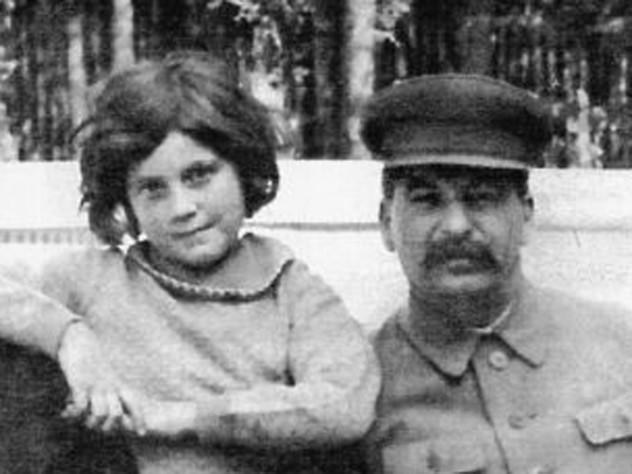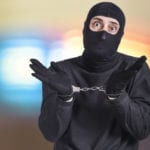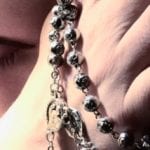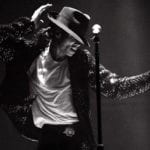 Weird Stuff
Weird Stuff  Weird Stuff
Weird Stuff  Miscellaneous
Miscellaneous Top 10 Things Crypto Was Supposed to Change & What Actually Did
 History
History 10 Huge Historical Events That Happened on Christmas Eve
 Music
Music 10 Surprising Origin Stories of Your Favorite Holiday Songs
 History
History 10 Less Than Jolly Events That Occurred on December 25
 Weird Stuff
Weird Stuff 10 Funny Ways That Researchers Overthink Christmas
 Politics
Politics 10 Political Scandals That Sent Crowds Into the Streets
 Weird Stuff
Weird Stuff Ten Bizarre Facts About The Doge Meme
 Our World
Our World 10 Ways Your Christmas Tree Is More Lit Than You Think
 Movies and TV
Movies and TV The 10 Coolest Stars to Set Sail on The Love Boat
 Weird Stuff
Weird Stuff 10 Fascinating Facts You Might Not Know About Snow
 Miscellaneous
Miscellaneous Top 10 Things Crypto Was Supposed to Change & What Actually Did
 History
History 10 Huge Historical Events That Happened on Christmas Eve
Who's Behind Listverse?

Jamie Frater
Head Editor
Jamie founded Listverse due to an insatiable desire to share fascinating, obscure, and bizarre facts. He has been a guest speaker on numerous national radio and television stations and is a five time published author.
More About Us Music
Music 10 Surprising Origin Stories of Your Favorite Holiday Songs
 History
History 10 Less Than Jolly Events That Occurred on December 25
 Weird Stuff
Weird Stuff 10 Funny Ways That Researchers Overthink Christmas
 Politics
Politics 10 Political Scandals That Sent Crowds Into the Streets
 Weird Stuff
Weird Stuff Ten Bizarre Facts About The Doge Meme
 Our World
Our World 10 Ways Your Christmas Tree Is More Lit Than You Think
 Movies and TV
Movies and TV The 10 Coolest Stars to Set Sail on The Love Boat
10 Famous People You Didn’t Know Were Catholic
Catholicism is one of the most widespread religious denominations in the world and certainly the largeset branch of Christendom. Under the ecclesiastic authority of the Pope in Rome, Catholicism is part of the national identity of countries as different as Ireland, Mexico, and Poland. But Catholicism is not just about Rome, Easter, and the pro-life movement. There are plenty of examples of famous Catholics who might be shocking considering their lifestyles or field of work.
10John Wayne
The classic Western hero was born into a Presbyterian family in Iowa and given the uninspiring name of Marion Robert Morrison, which he fortunately changed when he decided to go into acting. Despite his Presbyterian background, Wayne was surrounded by Catholics for his entire adult life. All three of his wives were Catholics of Hispanic descent. His seven children were raised Catholic, with one of his grandchildren even becoming an ordained priest. And Wayne himself made the decision to convert to Catholicism shortly before his death from cancer in 1979.
This was a symbol of the general change of attitude toward non-Protestants in the United States. Until the election of President Kennedy, only Protestants were considered capable of carrying an independent American policy in the best interests of the nation. Indeed, the Democratic candidate for president in the 1928 election, Al Smith, lost in part because he was thought to be at the command of the Pope. In the 1960s and ’70s, Catholicism grew closer to other American denominations, with Protestants adopting many of the causes Catholics were already espousing.
9Norma McCorvey
Her real name might not tell you much, but Norma McCorvey is better known by her legal pseudonym: “Jane Roe” of the famous Roe v. Wade case, which overturned many of the restrictions on abortion in the United States. After a highly-publicized trial, the Supreme Court ruled that women had the right to terminate a pregnancy within the first 24 weeks “free of interference by the State.”
McCorvey had a troubled childhood and developed a reputation for drug use and partying as a teenager. Although she remained a lesbian throughout her life, she did have relationships with men during her late teens and was on her third pregnancy when she brought her famous lawsuit in 1970. At the time, Texas didn’t allow abortions unless the life of the mother was in danger, and McCorvey couldn’t afford to leave the state to obtain one, making her the perfect plaintiff in the eyes of her crusading legal team.
Unsurprisingly, the legal case dragged on long past the birth of McCorvey’s child, and she never actually had an abortion. But she continued to support the cause, making appearances at Hollywood fundraisers and at marches organized by Gloria Allred. However, it was alleged that McCorvey often appeared more interested in raising money for herself than for feminist causes, although she never made significant money in any case. She published an autobiography in 1994, but again didn’t make much, while a TV movie based on her life only netted her around $10,000 total.
In 1995, McConvey began visiting a nearby evangelical group led by Flip Benham and eventually agreed to be baptized in a backyard pool. Three years later, she converted to Catholicism and became an anti-abortion activist, even appearing in ads declaring that Barack Obama “murders babies.” She remains a practicing Catholic, although some are uncertain as to the sincerity of her conversion, with Gloria Allred calling it a “career choice” and Flip Benham declaring that she “just fishes for money.”
8Jack Kerouac
The leading light of the Beat Generation is best known for On The Road, the semi-autobiographical account of his travels across America with his friends William S. Burroughs and Allen Ginsberg. The book helped make Kerouac an icon of the counterculture, known for dealing with themes like promiscuity, drug use, freedom, adventure, and aimlessness.
Of course, Kerouac is perhaps the last person you’d associate with Roman Catholicism. But he came from a Catholic French-Canadian family and his devout mother, the only woman he ever loved, transmitted her faith to her children. Jack would later admit to carrying the “sad peasant mysticism of Quebec Catholics” wherever he went, regarding racism and violence as sins rather than social issues, in pre-Vatican II fashion. He would toy with Buddhism for a time, recognizing a lot of common ground between Lamaist mysticism and Catholic asceticism, but in the end his worldview remained profoundly Catholic.
7Gary Cooper
A parallel case to John Wayne, Gary Cooper was a beloved actor who will forever remembered for his appearance in High Noon, where he played a sheriff who must confront an outlaw while his fellow townsfolk cowardly refuse to support him. Cooper usually played strong, calm, no-nonsense heroes with gentle manners, embodying an American ideal of steadfast goodness and reliability. His parents were English immigrants and he was raised Episcopalian, a branch of Christianity which considers itself as “Protestant, yet Catholic.”
Although didn’t live life entirely according to the tenets of Catholicism (he had affairs with screen stars like Ingrid Bergman, Patricia Neal, and Grace Kelly and ended up divorcing his wife) he gradually drifted toward it. Both his wife and daughter were practicing Catholics, a fact which doubtlessly influenced him, and it was after a visit to Pope Pius XII that he and his wife reconciled. “Coop” himself finally converted in 1959. He was diagnosed with cancer a year later and died in 1961 after receiving the last rites, inverting the usual process of conversion after the illness.
6Svetlana Alliluyeva

Svetlana Alliluyeva isn’t exactly a household name, and neither is Lana Peters, as she eventually became. The sad, lonely woman in question could never truly escape her birth name: Svetlana Stalina.
The Soviet Union was not the perfect environment to learn about the tenets of Catholicism, especially if your father was “the Vozhd,” Josef Stalin, the fearsome dictator and enforcer of state atheism. As a result, Svetlana grew up without any religion to speak of. Despite his fearsome reputation, Stalin doted on his daughter, particularly after his wife committed suicide, and they were very close when Svetlana was a child. But the relationship grew toxic as she grew up, with Stalin unable to accept that his daughter was her own woman. He even sent one early love interest to a gulag.
After a couple of failed marriages, Svetlana fell in love with the Indian communist Brajesh Singh and they lived together for years despite not being allowed to marry. Sadly, Singh had lifelong pulmonary problems and died in 1966. In 1967, Svetlana was allowed to travel to India to bring Singh’s ashes to his family. It was there that she defected to the West, spiritually moved. After flirting with Hinduism and Christian Science, remarrying, adopting the name of Lana Peters, and living in exile in the United States, she converted to Catholicism in 1982, even entertaining the idea of becoming a nun before ultimately deciding against it.
5Tony Blair
Since the time of Henry VIII, the United Kingdom has had a somewhat difficult relationship with Catholicism. Until recently, the heir to the throne was legally prohibited from marrying a Catholic, while the British monarch is still not allowed to be a Catholic. That prohibition used to extend to members of the Cabinet, who were supposed to be dyed-in-the-wool Anglicans, or at least converts like Benjamin Disraeli.
It is a sign of the fading anti-Papist bias of the Westminster establishment that now even former Prime Ministers can openly convert to Catholicism. Tony Blair might not be an example of a good believer, with his controversial involvement in the Iraq War, his pro-abortion policies, and his outrageous speaking fees, but he did recently convert to Catholicism after 30 years “in the closet.” His wife and children are Catholics and he often attended Mass, but he didn’t come out until after it was politically safe to do so.
In fairness, that probably had less to do with Catholicism itself and more to do with a perception that his Labour party supporters weren’t keen on public displays of religion. His adviser Alistair Campbell even instructed him to drop “God bless” from his speech on the invasion of Iraq, insisting that “we don’t do God.” Blair’s successor, Gordon Brown, would be more conventional: His father was a minister of the Church of Scotland.
4Marshall McLuhan
Even if you haven’t heard of Marshall McLuhan, you’ve probably spent your whole life being influenced by him. The Canadian communication theorist was a hugely influential voice in the development of modern advertising and media, famous for quotes like “the medium is the message,” “advertising is the greatest art form of the 20th century,” and “anyone who tries to make a distinction between education and entertainment doesn’t know the first thing about either.”
Since McLuhan did not discuss his religious beliefs publicly, it might be shocking for many of his followers to know that he converted to Catholicism in his mid-twenties and became a devoted father of six, taking daily communion and marching in pro-life rallies. Many commentators have argued that his faith was integral to his work, especially his idea of equating medium to message.
In Catholic theology, God shows his love for humanity by becoming human Himself in the person of the Son, Jesus Christ. Thus the medium (incarnation) becomes the same as the message (God loves us all and wants us to be saved). McLuhan believed that because God made the world, it must, in the end, be comprehensible, and that a sense of the divine could lead to an understanding of the mundane.
3Tom Araya
You could be excused to think that a head-banging thrash metal bassist who writes lyrics full of references to serial killers, Satanic rituals, and torture is, if anything, a Satanist. But you’d be wrong, at least in the case of Tom Araya, bassist for Slayer (“the most evil band in the world”) and Alice in Chains.
Born in Vina del Mar, Chile, Araya moved to the United States with his family at the age of five. After a difficult youth, he spent a period working as a respiratory technician to pay for the recording sessions of the first Slayer album, the unsubtly named Show No Mercy. Araya’s hard work paid soon off, as he and the rest of the band became internationally famous.
Despite the explicitly violent and anti-religious nature of some of their lyrics, Araya has remained a faithful Catholic. In fact, he told the Edmonton Sun that his love of gory and shocking music doesn’t have any relation to his faith at all: “I’m well-rounded, I have a really strong belief system and these are just words and they’ll never interfere with what I believe and how I feel.”
2Ernest Hemingway

A hard-drinking, womanizing, larger-than-life journalist and writer who renewed the English language by stripping it down to the bare essentials, Ernest Hemingway is perhaps the most famous writer of the 20th century. Despite being mocked for his apparently simple style, he knew that big words didn’t mean big emotions. Behind every seemingly mundane phrase were sometimes hours of hard work, for the purpose of good writing is not to show how good you are, but to use the best possible words for a given situation.
But for all his macho posturing and flirting with Communism, Hemingway ended up converting formally to Catholicism to marry his second wife, and continued to observe Catholic traditions throughout his life. Hemingway first became familiar with Catholicism while a volunteer on the Italian front of World War I, where he received the Extreme Unction after being badly wounded. In his work and life, the concepts of pilgrimage and ritual are key, especially the Catholic pilgrimage of the Jacobean Way that ends at Santiago de Compostela in Spain.
1Andy Warhol
It might be hard to believe, but Andy Warhol was born, raised, and buried Catholic. More specifically, he was born into the Ruthenian (Byzantine) Catholic Church, which is a weird mixture of Orthodox ritual (Ruthenian Catholic priests can marry, which is not usually the case for Roman Catholics) and Catholic dogma (Ruthenian Catholics recognize the Pope as head of their Church, which is in full communion with all other Catholics). Warhol’s parents came from present-day Slovakia, then under the Austro-Hungarian Empire, and were of Ruthenian descent.
As an adult, Warhol became known for his flamboyant works of art, his striking silver wigs, and his influence on avant-garde painting and music, including the Velvet Underground. But throughout it all, he kept a crucifix around his neck, often carried a missal and rosary, and attended Mass almost daily at St. Vincent Ferrer, his local church. Afterward, he would often volunteer at a Catholic soup kitchen. He personally met Pope John Paul II and financed the studies of a nephew who wanted to become a priest. Even his well-known homosexuality didn’t run counter to Church teachings, since Catholic doctrine condemns only homosexual acts rather than leanings and Warhol famously remained celibate. In a way he might have been a better Catholic than most.
A. J. Simonson is a junior engineer, a.k.a. an Oompa Loompa of technology. His field of choice is 3-D printing. History, languages, politics, and economy are side interests to his main passions: cars and planes.








